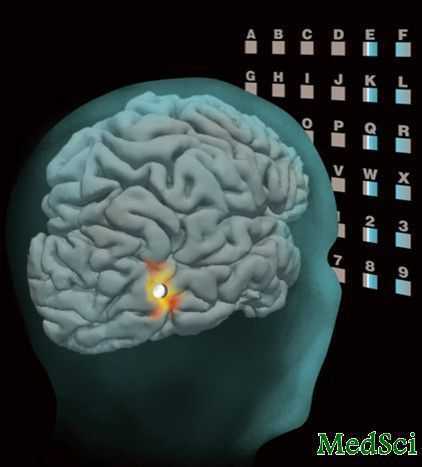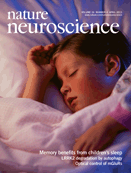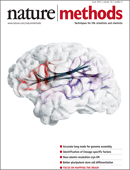PNAS:睡前兴奋确实影响入睡
2013-06-26 蓝建中 新华网
睡前兴奋影响入睡是经验之谈。而最近日本筑波大学研究人员通过动物实验从科学角度予以证实:睡前主动保持清醒状态,一旦想睡觉,入睡会比较困难。 研究人员将实验鼠分为两组,在实验鼠通常睡觉的时间段进行实验。研究人员通过触碰其中一组实验鼠的身体干扰它们的睡眠,让实验鼠连续6小时没法睡觉,“迫不得已保持清醒状态”;而对另一组实验鼠,研究人员每小时更换一次鼠窝,让实验鼠不断探索新环境,勾起它们的好奇心和警戒心
睡前兴奋影响入睡是经验之谈。而最近日本筑波大学研究人员通过动物实验从科学角度予以证实:睡前主动保持清醒状态,一旦想睡觉,入睡会比较困难。
研究人员将实验鼠分为两组,在实验鼠通常睡觉的时间段进行实验。研究人员通过触碰其中一组实验鼠的身体干扰它们的睡眠,让实验鼠连续6小时没法睡觉,“迫不得已保持清醒状态”;而对另一组实验鼠,研究人员每小时更换一次鼠窝,让实验鼠不断探索新环境,勾起它们的好奇心和警戒心,使实验鼠连续6小时“自发处于清醒状态”。
然后,实验小组测定了实验鼠进入睡眠状态的时间,发现睡眠受干扰的实验鼠平均两三分钟就进入了梦乡,但是老被变换环境的实验鼠,进入睡眠的时间平均达到15分钟。但是研究人员调查实验鼠睡眠时的脑电波,发现两组实验鼠大脑需求的睡眠量几乎相同。
筑波大学教授柳泽正史指出,调查睡前活动对睡眠的影响,将有助于治疗失眠,促进失眠症患者改善生活习惯。
6月18日一期的美国《国家科学院学报》网络版上公布了上述成果。

Behavioral and biochemical dissociation of arousal and homeostatic sleep need influenced by prior wakeful experience in mice.
Abstract
Sleep is regulated by homeostatic mechanisms, and the low-frequency power in the electroencephalogram (delta power) during non-rapid eye movement sleep reflects homeostatic sleep need. Additionally, sleep is limited by circadian and environmentally influenced arousal. Little is known, however, about the underlying neural substrates for sleep homeostasis and arousal and about the potential link between them. Here, we subjected C57BL/6 mice to 6 h of sleep deprivation using two different methods: gentle handling and continual cage change. Both groups were deprived of sleep to a similar extent (>99%), and, as expected, the delta power increase during recovery sleep was quantitatively similar in both groups. However, in a multiple sleep latency test, the cage change group showed significantly longer sleep latencies than the gentle handling group, indicating that the cage change group had a higher level of arousal despite the similar sleep loss. To investigate the possible biochemical correlates of these behavioral changes, we screened for arousal-related and sleep need-related phosphoprotein markers from the diencephalon. We found that the abundance of highly phosphorylated forms of dynamin 1, a presynaptic neuronal protein, was associated with sleep latency in the multiple sleep latency test. In contrast, the abundance of highly phosphorylated forms of N-myc downstream regulated gene 2, a glial protein, was increased in parallel with delta power. The changes of these protein species disappeared after 2 h of recovery sleep. These results suggest that homeostatic sleep need and arousal can be dissociated behaviorally and biochemically and that phosphorylated N-myc downstream regulated gene 2 and dynamin 1 may serve as markers of homeostatic sleep need and arousal, respectively.
本网站所有内容来源注明为“梅斯医学”或“MedSci原创”的文字、图片和音视频资料,版权均属于梅斯医学所有。非经授权,任何媒体、网站或个人不得转载,授权转载时须注明来源为“梅斯医学”。其它来源的文章系转载文章,或“梅斯号”自媒体发布的文章,仅系出于传递更多信息之目的,本站仅负责审核内容合规,其内容不代表本站立场,本站不负责内容的准确性和版权。如果存在侵权、或不希望被转载的媒体或个人可与我们联系,我们将立即进行删除处理。
在此留言













#PNAS#
67
#睡前#
79